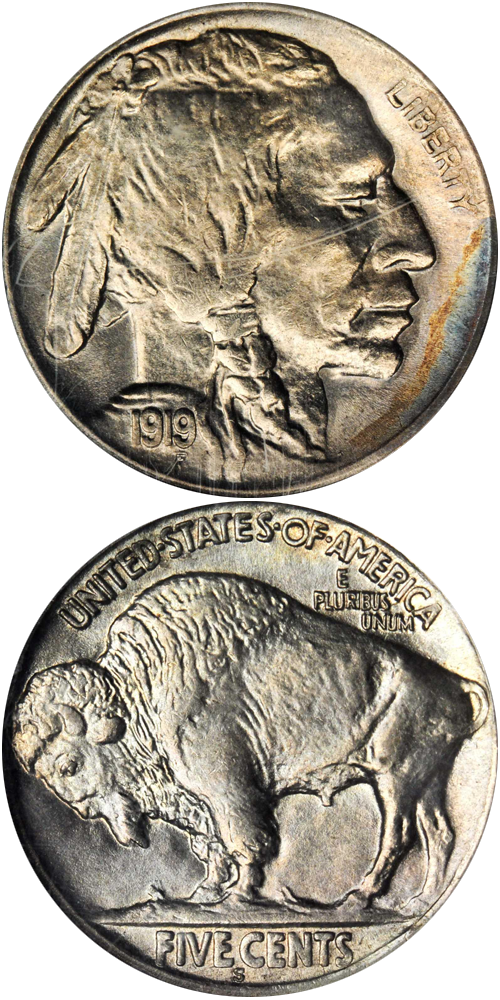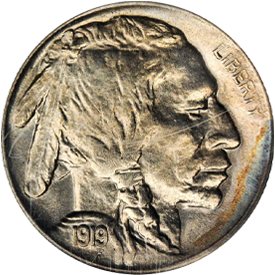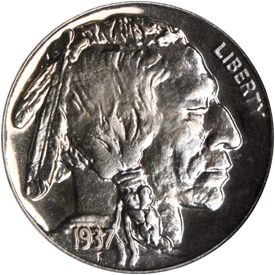Designed by: James E. Fraser
Issue Dates: 1913-1938
Composition: 75% copper, 25% nickel
Diameter: 21.2 mm
Weight: 5.00 grams (77.16 grains)
Edge: Plain
Business Strike Mintage: 1,174,464,771
Proof Mintage: 4,439 Matte Proofs; 10,189 Proofs with brilliant finish
The Type II Buffalo nickel is similar to the Type I of 1913 except for the reverse. The Type II features a restyled area at the bottom of the reverse. The ''buffalo;' previously standing on a raised mound, is now on a line or plane. The inscription FIVE CENTS, earlier on the mound, is now in a recessed portion below the line, thus protecting it from wear. This style was produced from 1913 through the end of the Buffalo motif in 1938.
The type set collector will have no difficulty in obtaining one of the commoner issues of this style, perhaps a piece in the 1930s. Examples are available in all grades from About Good through superb Uncirculated. Most surviving Buffalo nickels show areas of light striking in one part of the design or another, with the high parts of the Indian's head often being indistinct. Indeed, certain issues of the Denver and San Francisco mints in the 1920s are nearly always weakly struck, with 1926-D being particularly egregious in this regard. Sharply struck and minutely detailed business strike Buffalo nickels of any date are scarce. Matte Proofs were minted from 1913 through 1916 and closely resemble business strikes except that the Matte Proof issues have brilliant squared-off edges and rims and have a microscopically granular surface, unlike the mint "frost" of most business strikes. Often an expert must be enlisted to tell the difference. In 1936 and 37, Proofs of the brilliant finish were produced.








